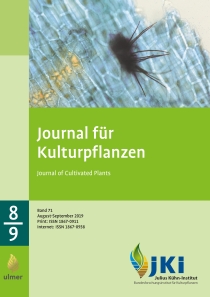Leaf wall area related dose within the framework of the authorisation for plant protection products in grape vine uses
DOI:
https://doi.org/10.5073/JfK.2019.08-09.01Keywords:
leaf wall area related dose, dose expression, dosage, high growing crop, leaf wall area, registration, viticultureAbstract
Plant protection products are usually applied as a spray application with the help of a boom sprayer. Depending on whether it is a field crop – such as cereal or potato – or a high growing crop – such as grapevine or apple – the boom sprayer is horizontally or vertically guided parallel in relation to the target surface.
In the case of high growing crops the target area is generally not identical to the ground area as it is the case of field crops. Within the authorisation the dosage of plant protection products in high growing crops should also be related to the real treated area, namely the leaf wall area.
The efficacy assessment should be based on the leaf wall area when approving uses of vine grape, pome fruits or high growing vegetable crops. In future the efficacy assessment should be based on the leaf wall area when approving vine grape uses. Accordingly, the description of the uses is adapted with an additional information of a leaf wall area based application rate. The consequences for the registration and the viticulture practice are presented.
Downloads
Published
Issue
Section
License
The content of the journal is licensed under the Creative Commons Attribution 4.0 License. Any user is free to share and adapt (remix, transform, build upon) the content as long as the original publication is attributed (authors, title, year, journal, issue, pages).
The copyright of the published work remains with the authors. The authors grant the Journal of Cultivated Plants, the Julius Kühn-Institut and the OpenAgrar repository the non-exclusive right to distribute and exploit the work.







